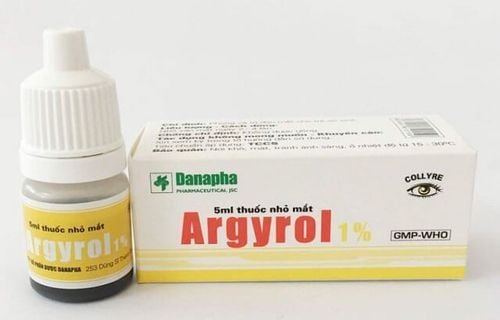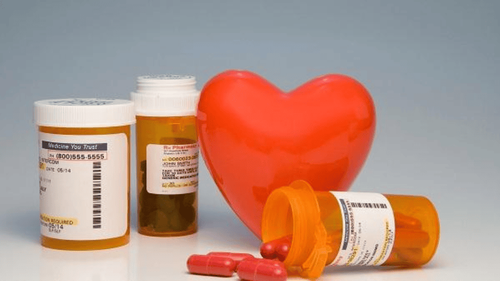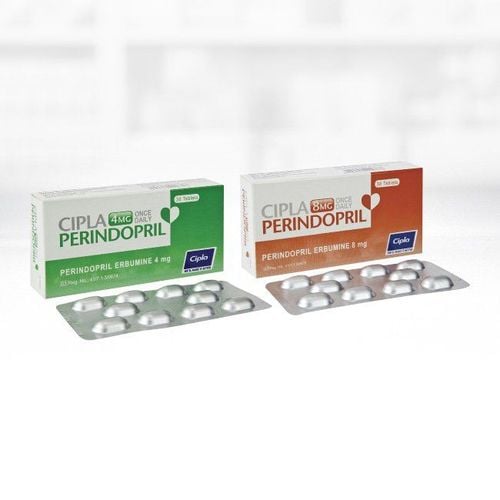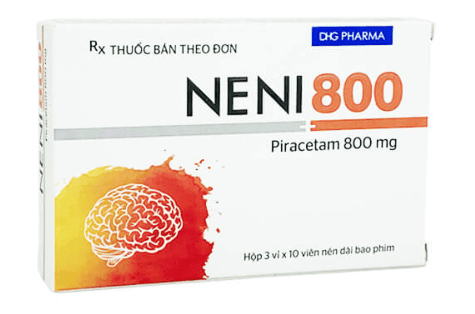This is an automatically translated article.
The article was written by Doctor Vu Duy Dung - Department of General Internal Medicine - Vinmec Times City International General Hospital.
Cerebrovascular ischemic stroke and cerebral venous sinus thrombosis are increasingly recognized as important causes of long-term morbidity and mortality in children. Diagnosis of ischemic stroke is often delayed, because acute neurological deficits can be difficult to detect in young children, and stroke is often not included in the differential diagnosis.
Recurrent ischemic stroke is not uncommon, especially in children with cerebrovascular disease. There are good guidelines for the treatment of adults, but not for children, especially children with ischemic stroke. Approaches to stroke in infants and young children may be based on clinical experience with pediatric stroke.
1. Treatment of acute stage
The goals of acute treatment of cerebral ischemic stroke in children are to limit damage, save the twilight zone, prevent stroke from spreading, treat complications, and prevent stroke. prevent stroke recurrence.
Children with acute stroke should be admitted to the pediatric intensive care unit for at least 48 hours for neurological and medical monitoring and aggressive treatment of complications. Emergency brain imaging should be performed in the presence of any neurological signs of worsening.
Rescue of the twilight zone is the main goal of acute treatment. The twilight zone is the area of the brain surrounding the infarct core where cell death has not yet occurred, but will if blood supply is not restored. Maintaining optimal cerebral perfusion pressure requires attention to blood pressure, including maintaining adequate volume. The head of the bed should be kept flat, and a suitable intravenous line should be established.
Transient hypertension, which may be a compensatory mechanism to maintain cerebral perfusion, is common after ischemic stroke in children, and permitting hypertension is generally recommended. In rare situations where treatment of hypertension is necessary, blood pressure should be carefully reduced and neurological monitoring closely monitored.
Reasonable blood oxygenation is necessary; however, oxygen support is not routinely indicated unless hypoxemia is present, with the exception of stroke patients with sickle cell disease where oxygen support can be used initially.
To reduce the metabolic needs of the brain, it is necessary to avoid fever or treat aggressively; Clothing and blankets should be removed, and acetaminophen should be prescribed.
Clinical and electrical seizures need to be treated, but there are no data to support seizure prevention with antiepileptic drugs. Do not give oral food or drink to the child when sedation is necessary for the procedure and when the swallowing assessment shows poor swallowing.
2. Increased pressure in the skull
Based on extrapolation from experience in adult patients, an emergency neurosurgery consultation regarding the indications for decompression craniotomy should be performed in the presence of malignant middle cerebral artery infarction. Suboccipital craniotomy should be considered when clinically worsened by cerebral edema associated with cerebellar infarction. In adults with malignant infarction, monitoring of intracranial pressure has not been shown to be helpful and may delay surgical treatment.

3. Reperfusion therapies
Intravenous recombinant tissue plasminogen activator (rtPA) is not FDA-approved for use in pediatric ischemic stroke, and official guidelines do not recommend its use out of scope. vi clinical trials. However, it has been used in pediatric cerebral ischemic stroke according to published expert consensus-based safety guidelines.
Use of rtPA in children requires parental or guardian consent. Contraindications to intravenous rtPA in pediatric acute stroke should be carefully considered, and intravenous rtPA should be used in a post-interventional follow-up stroke program. Although the FDA has not approved it for use in children, recent studies in adults have demonstrated the efficacy and safety of mechanical thrombectomy. Mechanical thrombectomy should only be performed by an experienced pediatric neurointervention team after adequate communication with the patient's parents or guardians, including the lack of data on safety and effectiveness in children and potential for vascular damage and stroke.
4. Prevention of early recurrence of stroke
After ischemic stroke, recurrence occurs in 1 in 5 children, and it can occur in the early period after stroke. As soon as it is determined that there is no intracranial bleeding on neuroimaging, anticoagulation may be an option for the prevention of recurrent stroke.
Emergency anticoagulation may be considered in children while continuing to evaluate the cause of acute stroke, as the cause of stroke in children is usually cardiac or vascular-to-vascular and heparin may reduce the risk of recurrent thromboembolism. Anticoagulation is recommended in children at high risk for recurrent ischemia, including those with extracranial head and neck artery dissection, those at risk of cardiac embolism, and those with underlying medical conditions. reason of increase.
Anticoagulation is usually initiated with intravenous heparin or unfractionated heparin. The risks of intravenous heparin include new or increased bleeding. Contraindications to heparin include active major bleeding, significant bleeding on neuroimaging, large hemispheric infarction with midline displacement or greater than one-third of the middle cerebral artery area, anterior history of heparin-induced thrombocytopenia, platelet count less than 50,000/mm3, and recent intracranial bleeding. Anticoagulation is generally avoided in children with CNS microvasculitis and moyamoya artery disease because of the increased risk of intracranial bleeding in these patients.
Unfractionated heparin has a short half-life and is rapidly reversed by protamine. If the child is stable and there is no immediate plan of any invasive procedure such as lumbar puncture or angiography for diagnosis, intravenous infusion of unfractionated heparin can be converted to low-molecular-weight heparin. Low molecular weight heparin has a lower risk of bleeding and thrombocytopenia, but it has a longer half-life and is not completely reversed by protamine.
If anticoagulation is not used, antiplatelet therapy with aspirin, which inhibits platelet activity through irreversible inhibition of cyclooxygenase-1, is recommended unless contraindicated.
Acute treatments for cerebral ischemic stroke in children
| Điều trị | Các khuyến cáo hiện nay |
| Chất hoạt hóa plasminogen mô | rtPA tĩnh mạch chưa được FDA cấp phép sử dụng trong đột quỵ thiếu máu cục bộ động mạch não ở trẻ em. |
| Tái tổ hợp đường tĩnh mạch (rtPA) | Chỉ nên được sử dụng trong nghiên cứu. Các hướng dẫn của Hiệp hội Tim Hoa Kỳ cũng tương tự nhưng lưu ý là thiếu đồng thuận trong sử dụng ở thiếu niên. Nếu rtPA được sử dụng thì chúng ta có các hướng dẫn dựa trên đồng thuận đã xuất bản về chỉ định, chống chỉ định và theo dõi. |
| Lấy huyết khối cơ học | Các hướng dẫn dựa trên bằng chứng đã xuất bản ủng hộ về hiệu quả và an toàn khi sử dụng ở người lớn; tuy nhiên, dữ liệu an toàn và hiệu quả chưa có ở trẻ em. Lấy huyết khối cơ học chỉ nên được cân nhắc bởi một đội can thiệp thần kinh có kinh nghiệm ở trẻ em. |
| Liệu pháp chống đông | Thuốc chống đông được khuyến cáo ở những trẻ có nguy cơ cao bị đột quỵ tái phát, bao gồm những trẻ bị lóc tách động mạch ngoài sọ vùng đầu-cổ, những trẻ có nguy cơ thuyên tắc mạch từ tim (ngoại trừ viêm nội tâm mạc van tim), và một số trẻ có bệnh lý tăng đông. Thuốc chống đông thường được khởi đầu bằng heparin tĩnh mạch, có thể đảo ngược tác dụng khi cần thiết. Heparin thường được chuyển sang heparin trọng lượng phân tử thấp, loại có nguy cơ thấp hơn bị chảy máu và giảm tiểu cầu do heparin (một biến chứng trung gian miễn dịch của heparin tiềm tàng đe dọa tính mạng), nhưng heparin trọng lượng phân tử thấp không thể bị đảo ngược tác dụng nhanh. Về lâu dài, heparin trọng lượng phân tử thấp hoặc warfarin sẽ được sử dụng. Các thuốc chống đông đường uống thế hệ mới chưa được nghiên cứu đầy đủ trong đột quỵ trẻ em. |
| Aspirin | Nếu không có chỉ định dùng thuốc chống đông, liệu pháp chống tiểu cầu với aspirin ở liều 1-5 mg/kg/ngày được khuyến cáo để dự phòng đột quỵ thứ phát. Liều cao hơn 3-5 mg/kg/ngày có thể được sử dụng sớm sau đột quỵ. Aspirin được khuyến cáo sử dụng trong ít nhất 2 năm; tuy nhiên, khoảng thời gian điều trị tối ưu chưa được biết. Một số nhà lâm sàng coi thiếu máu hồng cầu hình liềm là một chống chỉ định với liệu pháp aspirin. |
| Truyền máu | Lọc máu được khuyến cáo cho đột quỵ ở trẻ mắc thiếu máu hồng cầu hình liềm. Truyền máu có thể được chỉ định ở trẻ thiếu máu nặng và bị đột quỵ, đặc biệt khi có nguy cơ giảm tưới máu não, như trong bệnh động mạch não |
| Liệu pháp kháng virus | Acyclovir được khuyến cáo trong bệnh mạch máu do varicella-zoster virus khi xét nghiệm khẳng định có nhiễm varicella-zoster virus đang hoạt động trong hệ thần kinh trung ương. |
5. Consequences
After ischemic stroke in children, 6% to 10% of children die, some due to the stroke itself, others due to comorbidities, and more than 75% will have sequelae neurological deficits. Importantly, up to 20% of children will have a recurrent stroke. Risk factors for recurrent stroke include cerebrovascular disease, heart disease, sickle cell anemia, and elevated lipoprotein(a).
Careful stroke prevention includes avoiding dehydration and other hypercoagulable states, avoiding vasoconstrictors, maintaining normal weight and blood pressure, and avoiding activities that are likely to cause head trauma or other conditions. rapid movements of the head and neck.
Early rehabilitation, followed by admission to a rehabilitation unit, will optimize treatment outcomes after pediatric ischemic stroke. Neuropsychological assessment to guide return to school is important in the early post-stroke period, and full neuropsychological evaluation is indicated approximately 6 months after stroke when deficits have resolved. more stable. Follow-up neuropsychological evaluation is also often indicated, when educational needs change and new obstacles arise.
Pediatrics Department at Vinmec is one of the few multi-specialty hospitals with a full range of doctors specializing in neurology, cardiology, gastroenterology, nutrition, psychology, endocrinology, hepatology, helping to handle it quickly and in a timely manner. when diseases are discovered during the examination. As a key area of Vinmec Medical system, Pediatrics Department always brings satisfaction to customers and is highly appreciated by industry experts with:
Gathering a team of leading pediatricians: including leading experts with high professional qualifications (professors, associate professors, doctorates, masters), experienced, worked at major hospitals such as Bach Mai, 108.. Doctors All are well-trained, professional, with a mind - range, understanding young psychology. Besides domestic pediatricians, the Department of Pediatrics also has the participation of foreign experts (Japan, Singapore, Australia, USA) who are always pioneers in applying the latest and most effective treatment regimens. . Comprehensive services: In the field of Pediatrics, Vinmec provides a series of continuous medical examination and treatment services from Newborn to Pediatric and Vaccine,... according to international standards to help parents take care of their baby's health from birth to childhood. from birth to adulthood Specialized techniques: Vinmec has successfully deployed many specialized techniques to make the treatment of difficult diseases in Pediatrics more effective: neurosurgery - skull surgery, stem cell transplantation. blood in cancer treatment. Professional care: In addition to understanding children's psychology, Vinmec also pays special attention to the children's play space, helping them to have fun and get used to the hospital's environment, cooperate in treatment, improve the efficiency of medical treatment. To register for examination and treatment with Pediatricians at Vinmec International General Hospital, please make an appointment on the website for service.
Please dial HOTLINE for more information or register for an appointment HERE. Download MyVinmec app to make appointments faster and to manage your bookings easily.
References: Amlie-Lefond C. Evaluation and Acute Management of Ischemic Stroke in Infants and Children. Continuum (Minneap Minn) 2018;24(1, Child Neurology): 150-170.














